The invitation clearly said the wedding was to start at 8:00 am. However, nobody took that time seriously. At about 8:00 am, we left the Molale home, with the wedding gown, to go to the guest house in Lichtenburg, about 20 minutes away, where the wedding party had spent the night. When we got there, the parking attendant commented on how early we were. Later, I met the preacher, who told me that he had never been to an African wedding that had started on time.
The venue was a lovely guest house, one that had obviously hosted many weddings before. It was all decked out in white, and looked very much like a setting for a non- denominational ceremony in the states.
 While waiting for the ceremony to begin, I met a quite a few people, including Chris and Pumla. Chris grew up in Cincinnati and married a black South African woman “before it was cool.”
While waiting for the ceremony to begin, I met a quite a few people, including Chris and Pumla. Chris grew up in Cincinnati and married a black South African woman “before it was cool.”
The wedding began around 10:30. For someone who grew up in the carefully crafted liturgy of the Episcopal church, this ceremony seemed a mess. There was a hymn that I did not recognize but that most people knew well enough to sing without a book; it was in the European Protestant style, sung in Tswana. When the bridesmaids came in, beautifully dressed in yellow, they had no idea where they were supposed to go, and when they got there they discovered that there were not enough chairs for them all to sit. When the bride and groom came in, they seemed pretty clueless as well. The preacher directed everyone with good humor, telling the couple to continue standing, or that they could now sit. At one point, the preacher, who knew that they were already married in the states, asked the two to say why they wanted to get married, and, it seemed they were totally surprised by the question.
The sermon started with Proverbs, Chapter 12, Verse 4: “A virtuous woman is a crown to her husband.” From the point of view of women’s equality, it went downhill from there.
The preacher finally gave them permission to kiss. 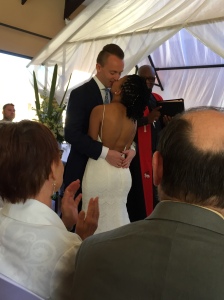 After the ceremony, there was a brief champaign toast, and the usual posing for pictures.
After the ceremony, there was a brief champaign toast, and the usual posing for pictures. 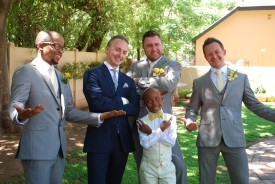
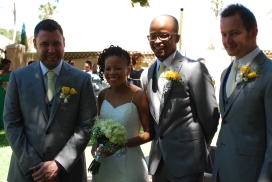
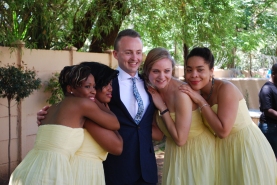
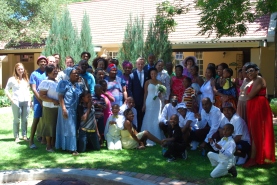 It is hard to judge how important the Christian ceremony was to the Molales. It was not the main event. Unlike the dancing entrance to the feast later, it was unrehearsed. Unlike the magadi, it started when they got around to it, in typical African time. However, the appearance, the setting, the dress, and especially the pictures that were taken afterwards were every bit as important to Tsholofelo as they would be to a typical American bride.
It is hard to judge how important the Christian ceremony was to the Molales. It was not the main event. Unlike the dancing entrance to the feast later, it was unrehearsed. Unlike the magadi, it started when they got around to it, in typical African time. However, the appearance, the setting, the dress, and especially the pictures that were taken afterwards were every bit as important to Tsholofelo as they would be to a typical American bride.
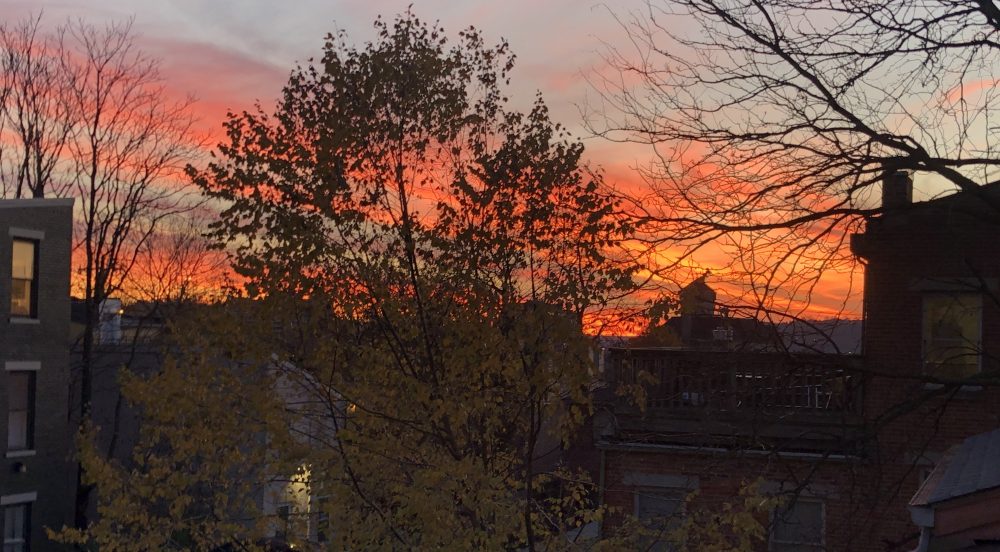
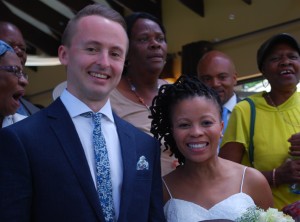
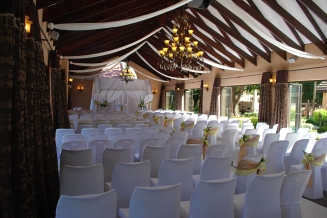
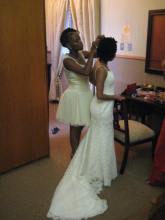
Pingback: White Wedding in Itsoseng: Contents | jplund
Reblogged this on maghumman.
LikeLike
I wonder what the preacher said to make you feel that “it went downhill from there”? Your tone sounds negative about this wedding ceremony.
“Typical African time”?….mmmhhh….
LikeLike
Thank you for your comments, though I must admit that I enjoyed more reading your delightful praise about the write-up of the Magadi.
Your comment suggests that I might harbor some racial prejudice. There might be some truth in that. I have struggled to free myself from the bigotry that I grew up, and I confess that I have not always succeeded. However, I think I can defend myself in the instances you mention.
“From the point of view of women’s equality, it went downhill from there.” I have attended several weddings where I was a bit uncomfortable with the preacher’s vision. Although I can’t, at this distance, reliably quote this particular sermon, I can say with confidence that it was beyond anything that I had heard previously in the degree of subservience that the wife is supposed to show her husband. I am comfortable with my description. I wanted to make the point, but not dwell on it.
“African Time” is a well known phenomenon, described in wikipedia. Both the wedding and magadi were scheduled to start at 8:00 am. The wedding had printed invitations, but all the Africans knew what was meant. People showed up about the time that the wedding actually started. The magadi, however, started promptly at 8:00. African Time applied to the Western event, not the African one.
LikeLike